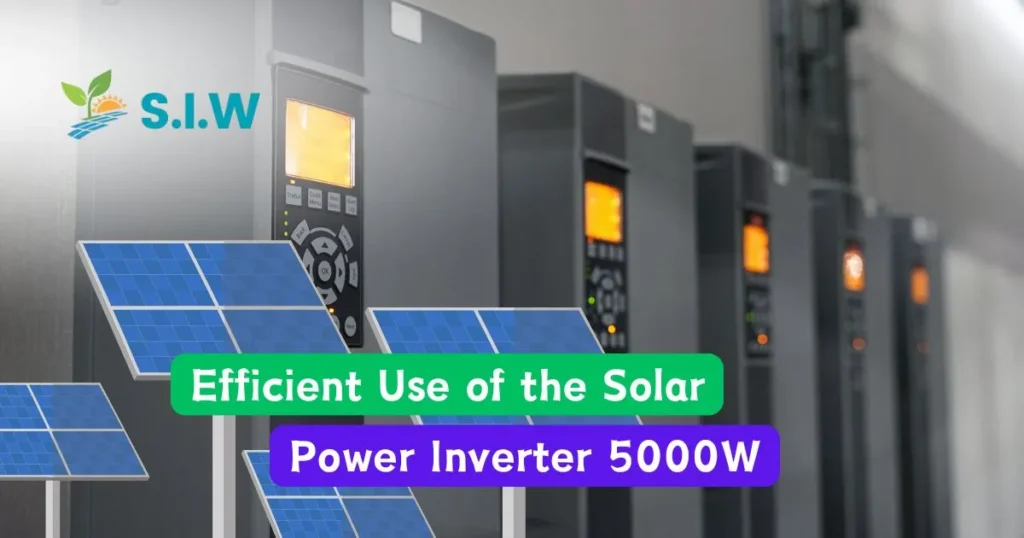In the rapidly advancing world of renewable energy, solar power inverters play a pivotal role in converting the sun’s energy into usable electricity for homes and businesses. Among the various capacities available, the 5000W solar power inverter stands out as a popular choice for medium to large-scale solar installations. This comprehensive guide will delve deep into the features, benefits, and considerations of a 5000W solar inverter, helping you make an informed decision that maximizes the efficiency and performance of your solar power system.
Understanding the Basics of Solar Power Inverters
What is a Solar Power Inverter?
A solar power inverter is a device that converts direct current (DC) generated by solar panels into alternating current (AC), which is the standard form of electricity used in most households and commercial spaces. Without an inverter, the energy harnessed from the sun would be unusable for typical appliances and grid-tied applications.
Why Choose a 5000W Solar Power Inverter?
The 5000W solar power inverter is particularly suited for medium to large residential properties or small commercial establishments. This capacity allows for a significant amount of energy conversion, making it ideal for homes with higher energy demands or for those looking to offset a large portion of their electricity usage with solar power. Additionally, it provides ample room for expanding your solar array in the future.
Key Features of a 5000W Solar Power Inverter
High Conversion Efficiency
Efficiency is a critical factor when choosing a solar inverter. A high-efficiency inverter ensures that the maximum amount of electricity generated by your solar panels is converted into usable power. 5000W inverters typically boast conversion efficiencies of over 95%, meaning minimal energy loss during the conversion process.
Advanced MPPT Technology
Maximum Power Point Tracking (MPPT) is a crucial feature in modern solar inverters. MPPT technology continuously monitors the output of your solar panels and adjusts the electrical load to ensure that the system operates at its optimum power point. This maximizes the energy harvest from your solar array, especially under varying sunlight conditions.
Robust Build and Durability
When investing in a 5000W solar power inverter, it’s essential to consider the build quality and durability of the unit. These inverters are typically designed to withstand harsh weather conditions, with features like IP65-rated enclosures that protect against dust and water ingress. A robust inverter ensures longevity and reliable performance over the years.
Comprehensive Monitoring and Control
Modern 5000W inverters often come equipped with sophisticated monitoring systems. These allow users to track the performance of their solar power system in real-time via apps or web interfaces. Some inverters also feature remote control capabilities, enabling users to make adjustments from anywhere, enhancing both convenience and energy management.
Types of 5000W Solar Power Inverters
String Inverters
String inverters are the most common type used in solar installations. In a string inverter setup, multiple solar panels are connected in series (a string), and the combined output is fed into the inverter. While cost-effective and widely available, string inverters can be less efficient in systems where panel shading or orientation issues exist.
Microinverters
Microinverters are installed on each individual solar panel, converting DC to AC at the source. This setup allows for better performance in partially shaded systems and provides panel-level monitoring. While microinverters can be more expensive upfront, they often lead to higher overall system efficiency, making them a worthwhile consideration for complex installations.
Hybrid Inverters
Hybrid inverters are designed for systems that include energy storage (batteries). A 5000W hybrid inverter can manage power from both solar panels and solar batteries, allowing for greater energy independence. This type of inverter is ideal for those looking to use solar power even during grid outages or for maximizing self-consumption of solar energy.
Benefits of Using a 5000W Solar Power Inverter
Energy Independence
One of the primary advantages of installing a 5000W solar power inverter is the potential for significant energy independence. With the right system design, homeowners can reduce their reliance on the grid, lowering electricity bills and providing a buffer against rising energy costs.
Environmental Impact
By choosing a solar power system, you are contributing to a reduction in carbon emissions. A 5000W system can offset a substantial amount of CO2 over its lifetime, making it an environmentally responsible choice.
Cost Savings
Although the initial investment in a 5000W solar power inverter and associated solar panels can be significant, the long-term savings on electricity bills can be considerable. Depending on your location and electricity rates, the return on investment (ROI) can be achieved within a few years.
Considerations When Choosing a 5000W Solar Power Inverter
Compatibility with Solar Panels
Ensure that the inverter you choose is compatible with the specifications of your solar panels. The voltage and current ratings of the panels should match the input parameters of the inverter to avoid inefficiencies or damage to the system.
Warranty and Support
A long warranty period is a good indicator of the manufacturer’s confidence in their product. Most reputable 5000W inverters come with warranties ranging from 5 to 10 years, with some offering extended warranties for an additional cost. Additionally, consider the availability of customer support and service centers in your area.
Grid Connectivity and Compliance
If your solar power system is grid-tied, the inverter must comply with local regulations regarding grid connectivity. This includes safety features such as anti-islanding protection, which prevents the inverter from feeding power into the grid during a blackout, ensuring the safety of utility workers.
Cost vs. Features
While it’s tempting to opt for the cheapest inverter available, it’s essential to balance cost with features and reliability. Investing in a well-built, feature-rich inverter may have a higher upfront cost, but it can lead to better performance and fewer issues over the system’s lifetime.








